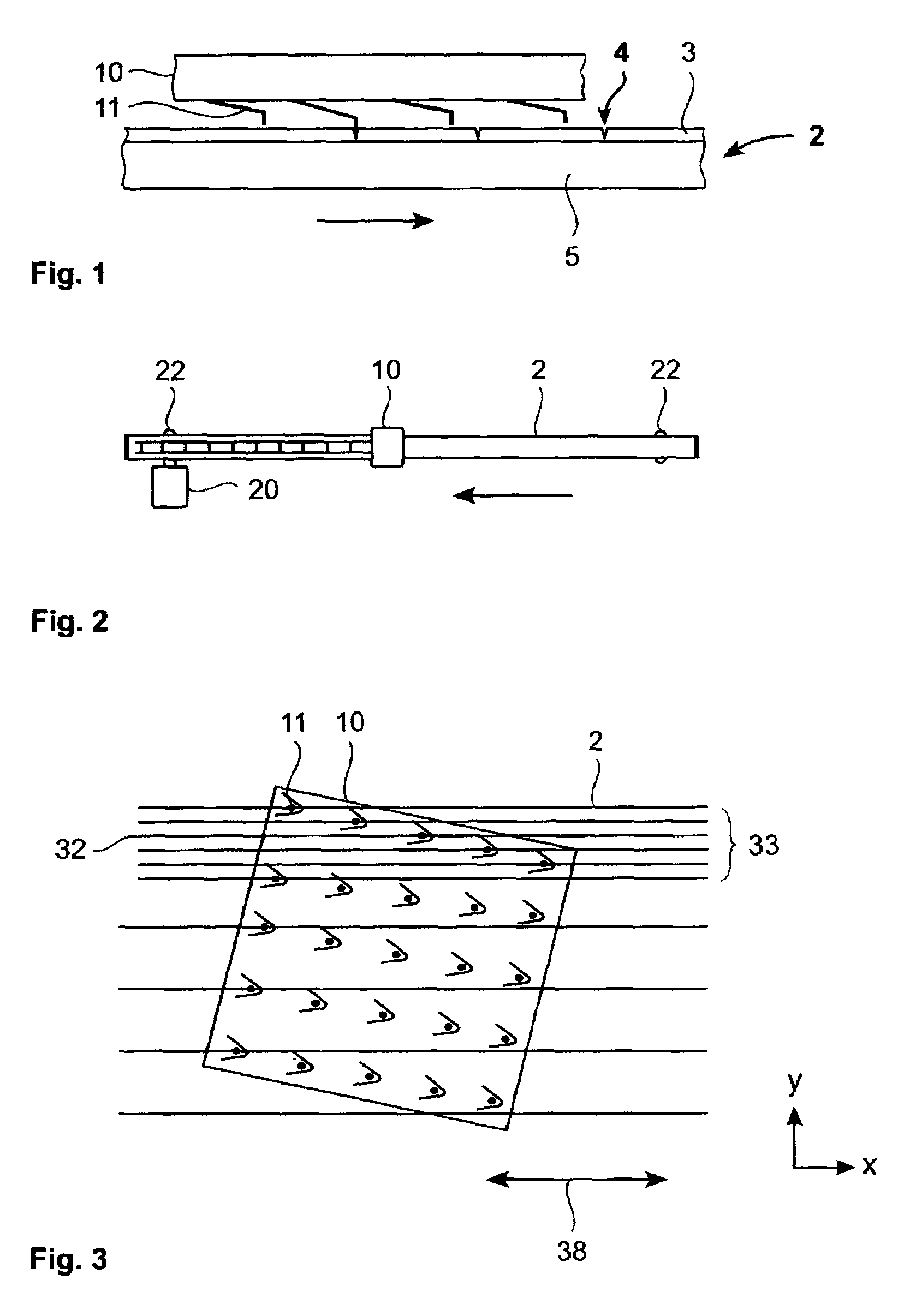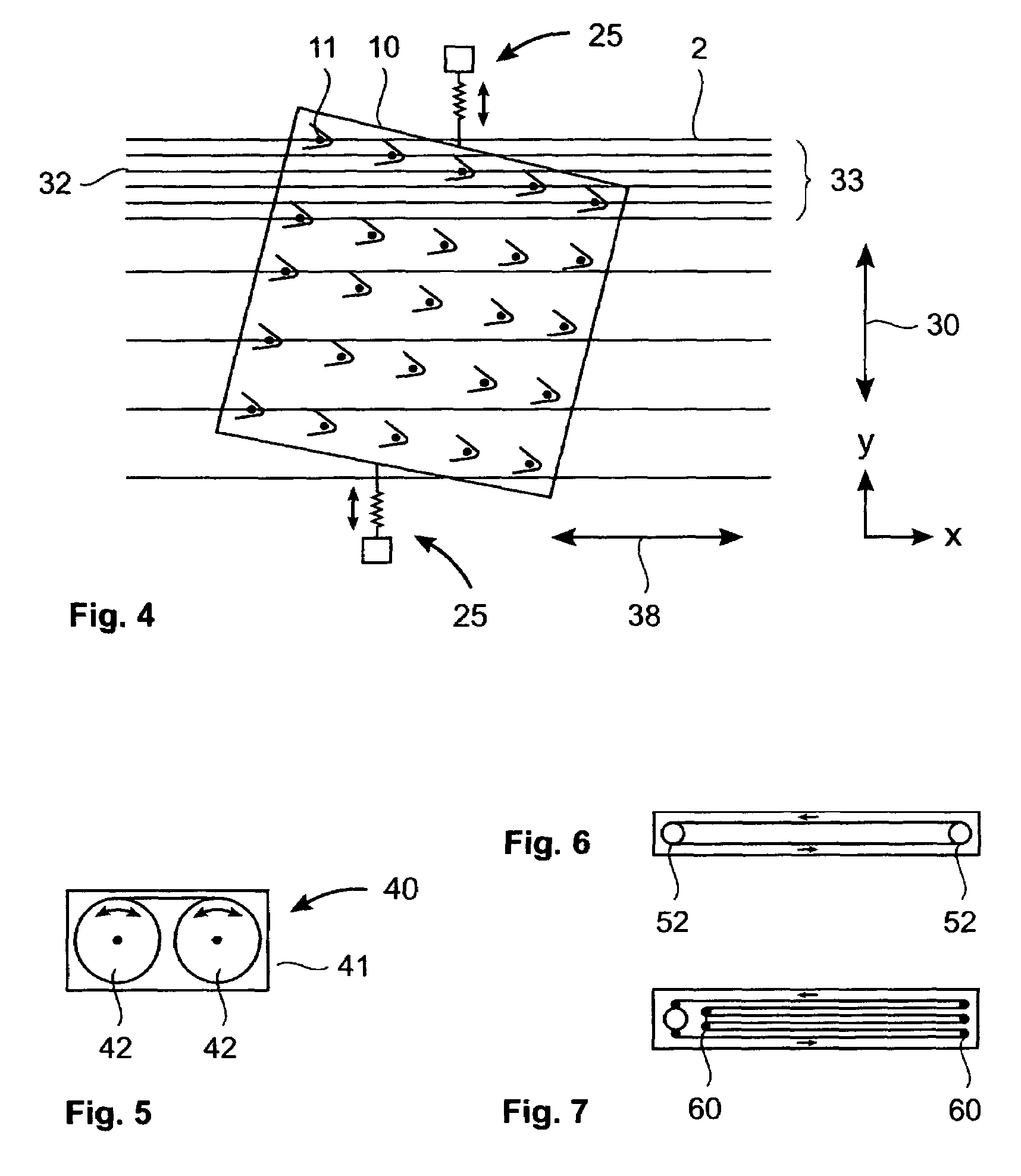Apparatus and method for storing and reading high data capacities
a technology of high data capacity and storage device, applied in the field of storage device and reading information, can solve the problems of requiring relatively expensive tape drive, affecting the quality of storing device, etc., and achieves the effect of simple structure and array construction, and high density of storable data
- Summary
- Abstract
- Description
- Claims
- Application Information
AI Technical Summary
Benefits of technology
Problems solved by technology
Method used
Image
Examples
Embodiment Construction
[0031]Before different embodiments of the present invention are described, the basic elements of the storage devices in accordance with the present invention are addressed.
Probes and Probe Arrays:
[0032]Probes are well known elements which are easy to make. Existing semiconductor and photoplastic fabrication processes can be employed. In essence, the techniques of micromachining are employed to create discrete probes and probe arrays. When dimensioning such probes, one has to take into account specific parameters of the material used as substrate in which the probes are formed. When properly designing such an array, it can be mass-produced at low cost and with high yield.
[0033]Usually, probes and probe arrays are made by etching away portions of a silicon substrate. This substrate is normally (100) oriented. (100) oriented silicon could for example be wet etched using ethyl diamine pyrocatechol or KOH solutions. Wet etching techniques are generally dependent on crystallographic orien...
PUM
| Property | Measurement | Unit |
|---|---|---|
| magnetic | aaaaa | aaaaa |
| magnetic fields | aaaaa | aaaaa |
| atomic force microscope | aaaaa | aaaaa |
Abstract
Description
Claims
Application Information
 Login to View More
Login to View More - R&D
- Intellectual Property
- Life Sciences
- Materials
- Tech Scout
- Unparalleled Data Quality
- Higher Quality Content
- 60% Fewer Hallucinations
Browse by: Latest US Patents, China's latest patents, Technical Efficacy Thesaurus, Application Domain, Technology Topic, Popular Technical Reports.
© 2025 PatSnap. All rights reserved.Legal|Privacy policy|Modern Slavery Act Transparency Statement|Sitemap|About US| Contact US: help@patsnap.com



